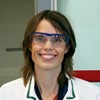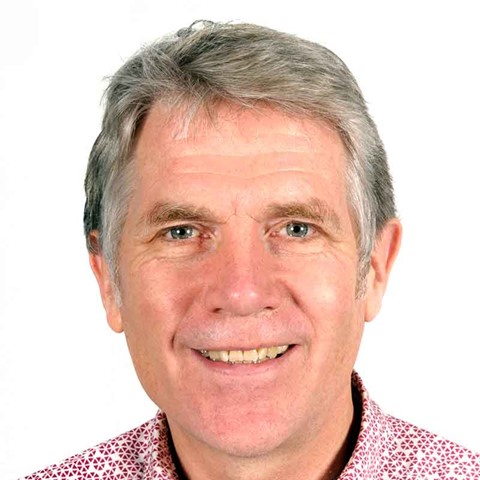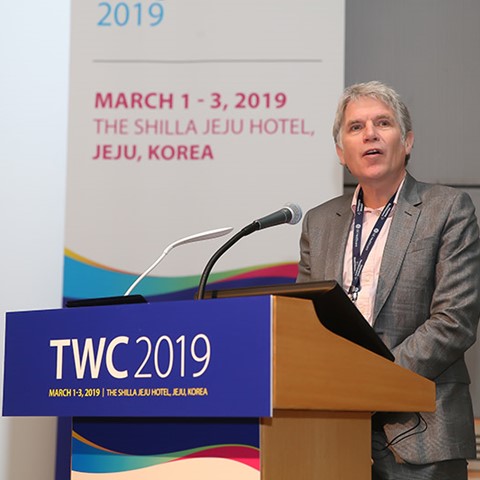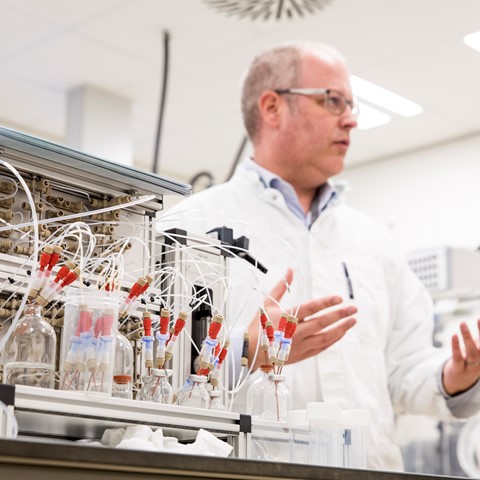The strength of nuclear medicine is its interdisciplinary character
The strength of nuclear medicine is its interdisciplinary character
25 May 2019
Despite many innovative developments in nuclear medicine, bringing the nuclear end product to the physician and thus the patient, remains a long-term and (therefore) often frustrating mission. Hopefully, this will not be the case any longer, according to physicist dr. Mark Konijnenberg of the department Radiology and Nuclear Medicine, Erasmus MC in Rotterdam.
High expectations of novel therapies demand a faster and smoother journey ahead for new nuclear medicines, whilst a high and stable quality needs to be ensured at the same time. Having been submersed in new data and interesting findings at the Theranostics World Congress (TWC) in South-Korea in March 2019, he returned home afterwards with a plethora of ideas and hope for the future. “One specific reason why the congress is so interesting, lies in the fact that it is organised by researchers,” Konijnenberg says. “This sets TWC clearly apart from most other congresses. Those are usually instigated and set up by organisations. Here, the scientists themselves are in the lead.” Hence, it was no surprise that all top scientists in nuclear medicine were present, with the programme not merely focusing on medicine but also on physics and dosimetry.
As all presentations were held in one plenary session, this allowed for better communication between the various disciplines, which is of utmost importance in nuclear medicine, according to Konijnenberg. “Normally, we do not really interact with each other that much. That is more or less the default setting; when the final product – manufactured by the chemical scientist – is ready, it will just move on to the next expert who will ‘work its magic’ on it. Hardly any consultation takes place between these parties.” Apart from the multidisciplinary cross-pollination between the attendees and their fields of interest at the TWC, the role of dosimetry was particularly emphasised. “Dosimetry was recommended in each and every presentation as a necessary prerequisite to successful therapy,” Konijnenberg states. “The great thing about a congress like Theranostics is, that it is a multidisciplinary setting with highly interesting answers and subsequent discussion. So all of us are definitely looking forward to the next congress, to be organised in 2021.”
Contact NRG

Karlijn van der Schilden
R&D Manager Medical Isotopes

Theranostics takes centre stage
In general, theranostics are proving to be a ‘hot topic’. The development of new therapies mainly for prostate cancer (PCa) has definitely attributed towards this sentiment. According to Konijnenberg, the first step to bring theranostics to a higher level was actually set by his own institute Erasmus MC, which developed a specific radionuclide therapy to tackle neuro-endocrine tumours (NETs). “This was a huge step forward as the survival of these patients can now be extended up to three years and more which was unheard of before. Next is the highly anticipated Prostate Specific Membrane Antigen (PSMA) therapy for PCa either with lutetium or with the alpha-emitter actinium-225.”
An Australian study which was presented at this year’s TWC taps into this. “By using absorbed radiation doses in the complete set of tumour lesions, researchers tried to predict if and to which extent therapy would be effective. This used to be done by using only one or two tumours which were considered representative for all tumours in one patient. However, advanced cancer patients often have many tumours which may not be similar to each other which made this a complicated and time consuming exercise. Artificial intelligence made it possible to find an automated method to draw in a larger number of tumours and to calculate the median radiation dose delivered to these tumours. This proved to have better predictive properties than the conservative method.” Konijnenberg adds that it was made clear that this method can already be used by other centres like Erasmus MC and colleagues all over the world. Not a luxury, but a mere necessity, as the same question will also come up in the clinical trial with actinium-PSMA which will be used to treat end-stage patients. “Heidelberg University was the first to use actinium-PSMA, followed by the University of Pretoria. However, the latter had some shortage on knowledge to calculate dosimetry. The South-African researcher was present at the congress, so contacts were made and help was offered. As such, we may collaborate in this field,” he adds.
Importance of new trials
At the congress in South-Korea, Konijnenberg and his colleagues presented an abstract on the possibilities to image alpha-emitters and predicting success in individual patients. He says: “These possibilities are limited as it will be either a therapy with lutetium or based on a PET-scan with a very short half-life. For treatment characterised by a longer half-life, it is more complicated and very difficult to make any assumptions. Based on a pharmacokinetic model combined with the physiologic profile of the patient, it may be possible to indicate the potential of specific treatments such as lutetium.” These ideas also form the basis for new research in Erasmus MC, according to Konijnenberg: “By investigating these options, we may be able to add an extra consideration for doctors which will allow them to decide whether the patient will be best served by lutetium therapy or whether patients need actinium therapy instead.”
To investigate this fully, a Phase 1 trial for actinium-PSMA will be running shortly in Erasmus MC. A subsidy of KWF has been granted and Konijnenberg and his colleagues are currently brainstorming on various elements of the study. His role will be calculating the radiation dosimetry for those patients who will be included. “We are particularly interested in finding out how the daughters of actinium behave; will they remain at the same location in the body as the binding of PSMA or will they become separated from the PSMA molecule? The last scenario poses the risk of it binding to the renal cortex, causing extensive and acute damage. We like to assess whether it is possible to image actinium separately from the daughters so we can see how they behave,” he explains.

“If FIELD-LAB is able to produce small quantities of actinium-PSMA as a hot liquid, it would save so much time, that would be great!“
Role of FIELD-LAB
The actinium-PSMA trial is an ideal candidate to conduct in collaboration with FIELD-LAB, according to Konijnenberg. “If FIELD-LAB – which meets Good Manufacturing Practices (GMP) requirements – is able to produce small quantities of actinium-PSMA as a hot liquid, then that would be great,” he says. “It would save so much time, as at the moment, prior to each administration of actinium-PSMA in a patient, a quality control test needs to be performed to ensure safety. If we can prove that the product is stable, then this separate control test can be omitted. A GMP facility such as FIELD-LAB would therefore be of great use. We will start with other potential and highly interesting projects for FIELD-LAB such as research into the specific role of platinum-195m in optimising treatment of NETs as well as the use of isotope lead-212 for other types of cancer therapies. Both should be tested pre-clinically and brought into FIELD-LAB.”
The European Union is convinced of the advantages of theranostics: “This is exactly why Euratom states the approval for theranostics needs to be sped up. They see the increasing success of theranostics but at the same time note that the timeframe for an approved product to reach the clinic is too long. If everything is going well, you are looking at ten years from start to finish…and that is an optimistic view,” says Konijnenberg. He explains the importance of working with FIELD-LAB: “Often, we only have the lab product; manufacturing a GMP product is incredibly expensive. Therefore, it is frequently done by using a multicentre approach but this creates problems with the legal rights to ownership as there are many parties involved.” Konijnenberg thinks the development and bringing the end theranostic products to the market needs to be done significantly quicker: “I was involved at the very beginning of peptide receptor radionuclide therapy and even back then, I thought it took far too long. At that time, there were no barriers due to GMP products, but there were sufficient other obstacles. Nowadays, a GMP product is an extra threshold. If you can remove it, it will make a huge difference.”
Published on July 29th, 2020.

More information?
Do you wish to learn more on nuclear medicine and how FIELD-LAB can help you? Get in touch with us!

